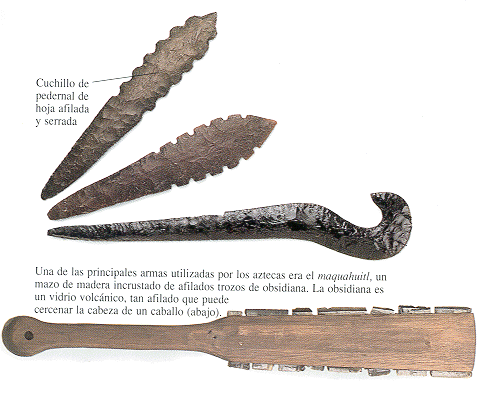Valeria Fernández
New American MediaPHOENIX, Ariz.--It was early on November 27, her daughter’s birthday, when Ana got the call from a social worker.
“Are you in the country legally?” the person asked.
“No, I’m undocumented,” Ana replied. She had applied for health insurance for her children, both U.S. citizens.
The worker paused for a moment and then informed Ana that under a new Arizona state law she would have to report her to immigration authorities, although she did not want to.
Since the law was passed last month an estimated 700 individuals who applied for public benefits have been reported to federal Immigration and Customs Enforcement (ICE), according to ICE. It is unknown how many were applying for public benefits that their U.S.-born children are entitled to.
“I dug my own grave, but I wasn’t asking something for me, it was for my kids,” said the woman, 31, who asked that her real name not be used.
After they celebrated her daughter’s birthday, Ana and her family picked up and moved out of fear that immigration officials would come looking for them. Now, they all share a room at a neighbor’s house.
As stories like Ana’s spread in Arizona’s immigrant communities, the climate of fear is growing. The law’s impact is having a chilling effect on the provision of health services for a population of children and women that is already underserved. About one third of Arizona children have immigrant parents, according to a recent Pew Hispanic Center survey.
Children of undocumented immigrants are less likely to have health insurance than those born to legal immigrants or U.S. citizens. In 2007, nearly half of the children born to unauthorized immigrants were uninsured and 25 percent of those who were born in the United States were uninsured.
The new law’s impacts are emerging just as healthcare officials are urging undocumented people to get immunized against the H1N1. Meanwhile, implementation of the new law by state agencies is characterized by confusion.
“The situation is explosive. If the H1N1 virus reaches people and they are not going to the doctor or receiving services, what will happen?” said Alfredo Gutiérrez, editor of La Frontera Times and a former Democratic senator.
Ana had provided the state Department of Economic Security (DES) with all her information in an application for AHCCCS (Arizona Health Care Cost Containment System), the state subsidized insurance program. Under, the new law, HB 2008, DES employees are required to report anyone who is illegally in the country and tries to apply for public benefits.
The immigration status of a parent applying on behalf of a child is not supposed to keep the child from receiving the benefit, according to DES.
Ana believes the DES worker inquired about her status because she gave information about her husband’s employment and his real social security number. The number issued by the Social Security Administration was given to him when he was younger, so that his father, who is a legal permanent resident, could claim him as a dependent. But it doesn’t authorize him to work.
DES does not ask about people’s immigration status when they complete an application, but nothing in the rules indicate that their employees cannot inquire about it. Workers must file a report if someone admits to being in the country illegally.
Employees who don’t do that could face fines, lose their job and face up to four months in jail.
Undocumented immigrants like Ana wonder if immigration authorities will come looking for her. That depends on Homeland Security’s priorities, as set by Sec. Janet Napolitano. As Arizona governor, she opposed measures similar to HB 2008. ICE spokesperson Vinnie Piccard said his agency has improved the reporting system for state agencies in light of the new law.
“ICE will evaluate referrals to determine the individual's immigration status and criminal history,” he said. “Top priority is given to aliens who pose the greatest threat to public safety, such as those with prior convictions for major drug offenses, murder, rape, robbery and kidnapping, burglary and other serious property crimes.”
But that doesn’t clarify matters for employees of Arizona agencies facing a new law and federal requirements to serve anyone regardless of immigration status. They are caught between a rock and a hard place.
“Everybody is afraid of the perception that they’re not complying with the state law,” said Tara McCollum, director of government and media relations for the Arizona Association of Health Centers. “Our centers are struggling with how to comply and still serve our patients.”
McCollum said the 16 centers and their 140 sites serve a large number of undocumented immigrants and have seen a patient drop off, fewer people going to get immunized and cancellations because of the fear.
“This is very sad because a lot of women are not receiving pre-natal care for their babies,” said McCollum. “There are people who desperately need healthcare and are not getting it.”
The centers are independent not-for-profit agencies that receive federal grants and some state funding. But they claim they should be exempt from the reporting requirements because they are meant to be a safety net mandated to provide services to anyone regardless of immigration status.
AAHC awaits a legal opinion by State Attorney General Terry Goddard on the impact of the law and whether the center will be required to report their clients.
The centers serve about 20 per cent of the uninsured population in Arizona. Often they’re the only option in rural areas.
“This is why this so problematic for us,” said McCollum. “These people don’t have any other choices,”
Among them there are women like Guadalupe, 29, who is two months pregnant but hasn’t visited a doctor. Her husband is legally in the United States but can’t afford to pay insurance for her second pregnancy in 10 years.
“It was an accident, we didn’t plan it,” said Guadalupe, who asked that her real name not be used because she is undocumented.
That’s part of the reason she doesn’t want to apply for emergency health care services she is entitled to under federal law.
“I never asked anything of the government, and my husband pays taxes,” she said. “With the new laws they have in place, you’re automatically a criminal.”
Guadalupe said she believes abortion is wrong but fears that will be her only choice. A regular delivery could cost her $5,000 at a local hospital.
Rosie Villegas-Smith, director of the anti-abortion group Voces Por La Vida, has been in touch with women like Ana. She’s worried that many of them are not applying for an emergency services card, provided by AHCCCS, which would help them get pre-natal care.
“Republicans say that they’re pro-life, but they don’t realize that this affects those who are most vulnerable, like pregnant women,” said Villegas-Smith.
The Arizona Department of Health Services (ADHS) has received questions from politicians regarding pre-natal care under this new law.
“We feel we were already in compliance with this bill,” said Duane Huffman, chief legislative liaison for ADHS, who acknowledged the confusion regarding the new law.
HB 2008 doesn’t directly affect emergency services, immunizations, and Woman and Infant Care (WIC), a nutritional service. While there are concerns, programs like WIC have not reported a decrease in applicants, said Huffman.
But immigrant advocates think the law’s negative impacts are real and intentional.
“This law was designed to generate panic and for people to self-deport,” said Antonio Velazquez, director of the Maya-Chapin organization, which represents over 3,000 indigenous Guatemalans in metropolitan Phoenix. “But the truth is that they don’t have the funding or the personnel to enforce it.”
Proponents of HB 2008 argue that it was necessary to stop undocumented immigrants from fraudulently receiving welfare and healthcare insurance.
In a recent column published in the East Valley Tribune, Republican State Senator Russell Pearce claimed that undocumented immigrants receiving public benefits are one reason the ACHCCS budget has increased.
But AHCCCS statistics reveal few cases of fraud in the application process. In fiscal year 2009, the AHCCCS fraud unit investigated 215 cases, but there’s no break down of how many were related to undocumented immigrants. In 2009, the state insurance program grew by 214,000 new members. Before the new law, AHCCCS already had a system in place to check eligibility requirements, which include U.S. citizenship or permanent legal residence for at least five years.
“We are turning everybody into immigration agents,” said attorney Isabel Garcia, director of the Coalición de Derechos Humanos, a human rights organization in Tucson, “when the reality is that immigration is a complex area of the law.”







